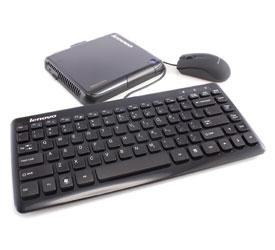
Is your old computer costing you more than you think?
Re-using old computers as servers around the home or office is a common and practical solution to the increasing need for always-on machines like HTPCs (Home Theater PCs), solar panel monitoring, home automation, weather station uploading, and security systems. Since older machines have outlived their usefulness as primary desktops or servers they’re just like found money, saving the expense of buying a new dedicated machine. But with the increasing cost of electricity and awareness of the need to conserve power those machines may be costing you more than you think.
A typical desktop computer complete with fan, mainstream CPU and a graphics card can easily use 150 watts of power even when it is idle. For most home server applications where the machine isn’t allowed to go to sleep you can multiply that by about 9,000 hours in a year. That means the apparently innocent machine stuck in the corner is consuming well over 1,000 Kilowatt hours per year. Depending on the situation that may be over 10% of your total electric use. If the machine is tricked out with high-end graphics cards it may be even more. Depending on your rates that can mean as much as $200 per year in extra electricity costs.
There are two good ways to get a handle on how much power a computer system is actually using. The first is with a UPS (Universal Power Supply) with an LED readout. It’ll quickly tell you how many watts it is serving. Even more effective is a valuable little tool called a watt meter like the Kill A Watt models from P3. They plug between your computer and the wall and can tell you how much power a system uses over time. The better models will even let you program in your electric rates so you can watch the dollar signs mount.

Knowing how much money is going down the drain is only the first step. The next one is fixing it. Fortunately the rise in low-power mobile computing and increase in energy efficiency of computers has helped create some very low cost fanless motherboards and small systems that don’t take any more power than a netbook. You can quite possibly replace that big bruiser of an old Pentium desktop with a machine you can hold in your hand and consumes about 15 watts, a 90% power saving.
With nothing more than a screwdriver you can assemble your own small system from a barebones kit, some RAM and an old laptop hard drive using resource sites like http://mini-itx.com to help you get going. You can also opt for the more stylish option of something like an entry-level ASUS Eee Box compact PC which comes pre-assembled in a variety of designer colors. If you have a need for more processing horsepower for an application like Home Theater you can move up to a more powerful nettop like the Lenovo IdeaCentre Q150.
Author: By David Cardinal